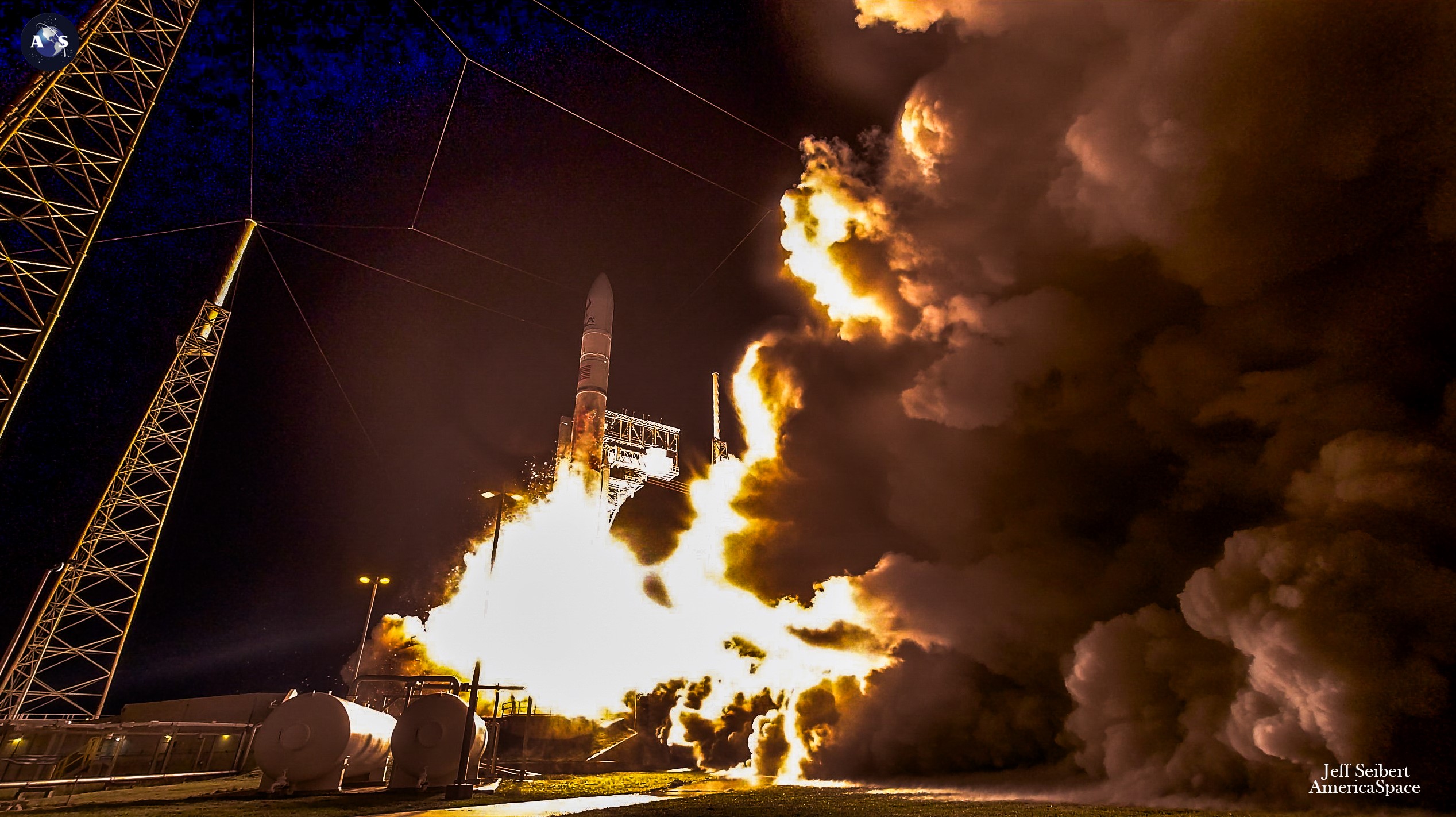
United Launch Alliance (ULA) has declared 100-percent mission success for Monday’s 2:18:38 a.m. EST maiden voyage of its Vulcan-Centaur heavylifter from Space Launch Complex (SLC)-41 at Cape Canaveral Space Force Station, Fla. However (and through no fault of the rocket), its primary payload—Astrobotic’s Peregrine lunar lander, laden with 21 payloads on behalf of seven sovereign nations—suffered a catastrophic propellant loss and will no longer achieve a soft-landing on the Moon’s Sinus Viscositatis (“Bay of Stickiness”), near the Gruithuisen Domes, on the northeastern border of Oceanus Procellarum (“Ocean of Storms”), previously targeted for 23 February.
It is a disappointing loss for this first flight under NASA’s Commercial Lunar Payload Services (CLPS) contract, which might have seen the United States soft-land its first vehicle on the Moon since Apollo 17 in December 1972. But for ULA and Vulcan-Centaur, the launch attained pinpoint accuracy, delivering Peregrine to its intended highly elliptical orbit, with an apogee some 220,000 miles (360,000 kilometers) above Earth, and Celestis, Inc.’s Enterprise Flight memorial and “space burial” payload—secured to the Centaur V upper stage—into deep space and permanent heliocentric orbit.
“Bullseye!” tweeted ULA CEO Tory Bruno of the Vulcan-Centaur’s successful launch of “Cert-1”, the 202-foot-tall (61-meter) rocket’s maiden certification mission. “Dead on, again. Not bad for a first flight.”
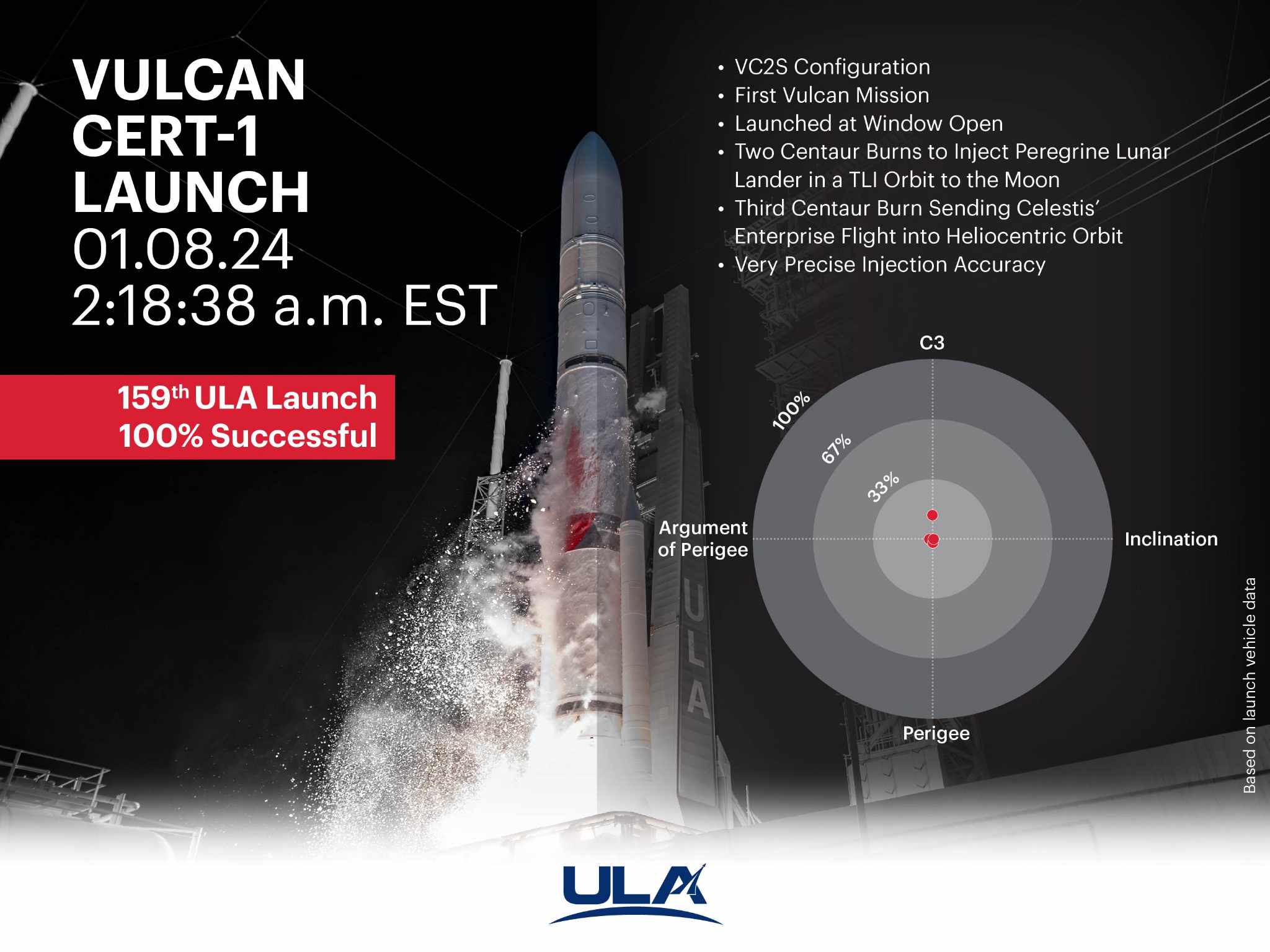
The Vulcan-Centaur lifted off right on the opening of Tuesday’s 45-minute “launch window”, the twin Blue Origin-built BE-4 engines of her core stage and a pair of Northrop Grumman Corp.-furnished Graphite Epoxy Motor (GEM)-63XL solid-fueled boosters providing an estimated 2.1 million pounds (950,000 kilograms) of thrust at T-0. Powering uphill, the behemoth passed the speed of sound a minute into the flight and experienced peak aerodynamic turbulence (colloquially known as “Max Q”) at 76 seconds.
One minute and 53 seconds past liftoff, as planned, the twin GEM-63XLs were expended and jettisoned, leaving the BE-4 engines—whose liquid oxygen and Liquefied Natural Gas (LNG) propellant yielded an eerie blue exhaust—continued to burn until Booster Engine Cutoff (BECO) some five minutes into the flight. The core stage, emblazoned in its red, whiter and gray Vulcan livery, was then discarded, leaving the Centaur V and attached payload alone to continue the journey into space.
The Centaur V’s pair of RL-10 engines, built by Aerojet Rocketdyne, ignited on no fewer than three occasions to inject Peregrine into low orbit and eventually a highly elliptical orbit. That should have allowed it to be captured by lunar gravity and descend to the Moon’s surface in six weeks’ time.
A final Centaur V burn then delivered the upper stage and Celestis’ Enterprise Flight into deep space. This memorial and “space burial” payload includes ashes and complete-human-genome individual DNA samples from Star Trek creator Gene Roddenberry, his wife Majel Barrett Roddenberry, Montgomery “Scotty” Scott actor James Doohan, Leonard “Bones” McCoy actor DeForest Kelley and Lt. Nyota Uhura actress Nichelle Nichols, together with messages of greeting and goodwill “on an endless journey in interplanetary space”.
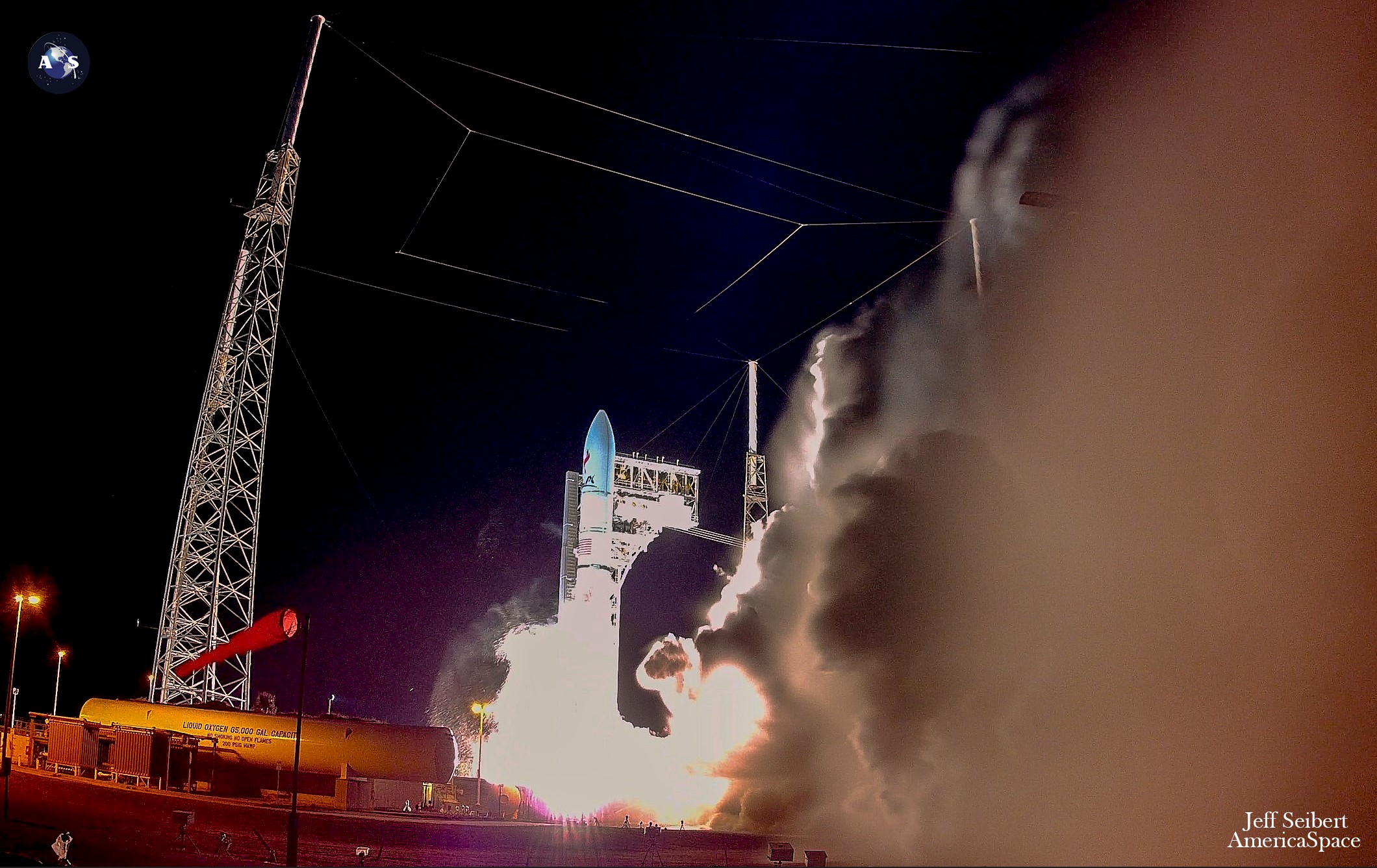
But the situation for Peregrine took a sharp turn for the worse, not long after the lander’s deployment from the Centaur V some 50 minutes after launch. NASA’s Deep Space Network (DSN) began receiving telemetry from the small spacecraft and Peregrine’s primary command and data-handling unit and thermal, propulsion and power controllers were brought satisfactorily online.
However, the lander soon entered what Pittsburgh, Penn.-based Astrobotic called “a safe operational state”, after which “an anomaly” arose that prevented the lander from achieving a stable, Sun-pointing orientation. Suspicion quickly fell upon a propulsion system malfunction, “that, if proven true, threatens the ability of the spacecraft to soft-land on the Moon,” Astrobotic glumly announced late Monday.
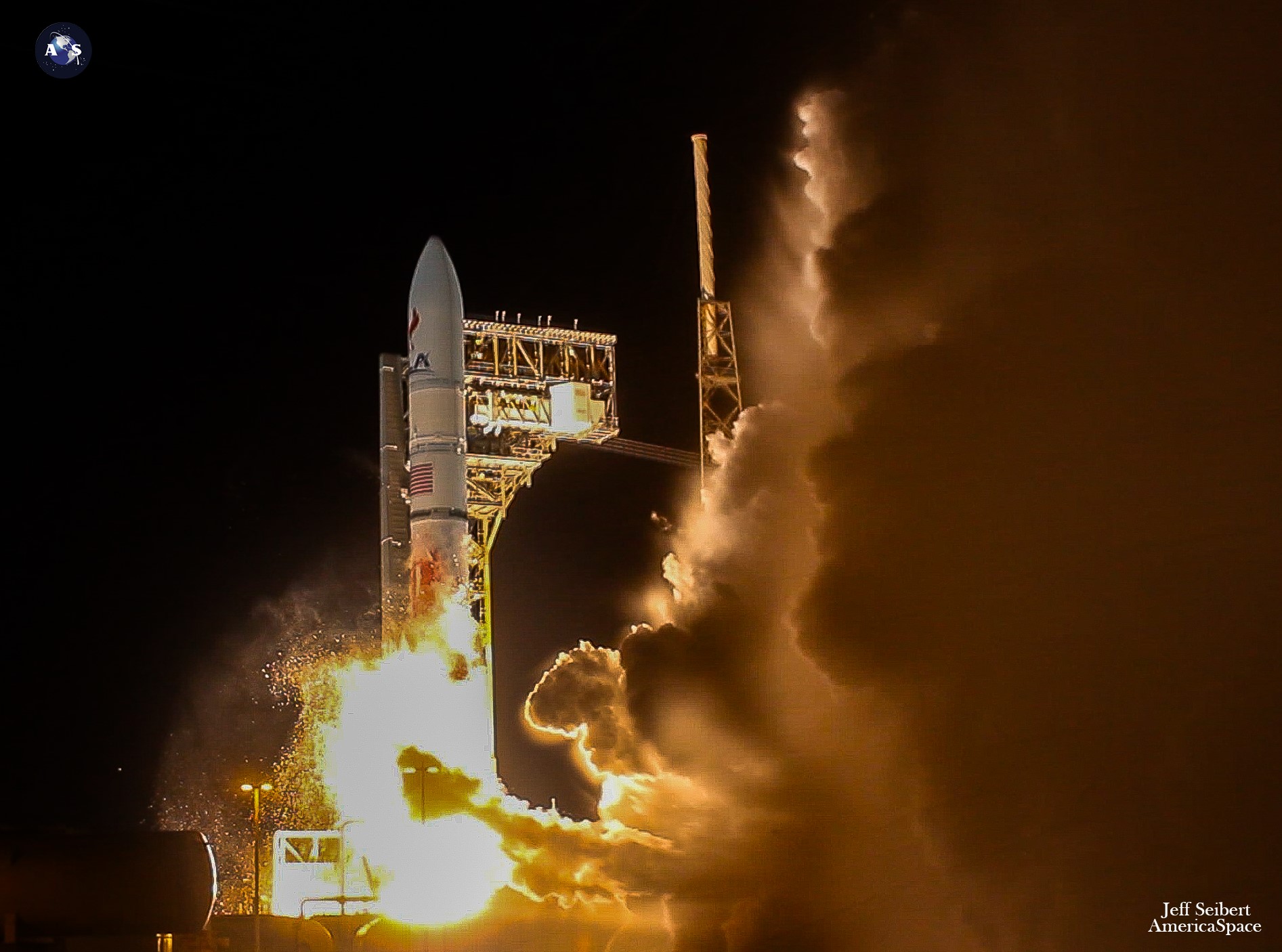
Compounding matters further, Peregrine’s on-board battery reached operationally low levels and despite engineers’ sterling efforts to reorient its solar panels toward the Sun a period of communications loss was experienced. An improvised maneuver successfully re-established contact and teams recharged the battery.
But the damage, it seemed, had been done. “Unfortunately, it appears the failure within the propulsion system is causing a critical loss of propellant,” Astrobotic noted. “The team is working to try and stabilize this loss but given the situation we have prioritized maximizing the science and data we can capture. We are currently assessing what alternative mission profiles may be feasible at this time.”
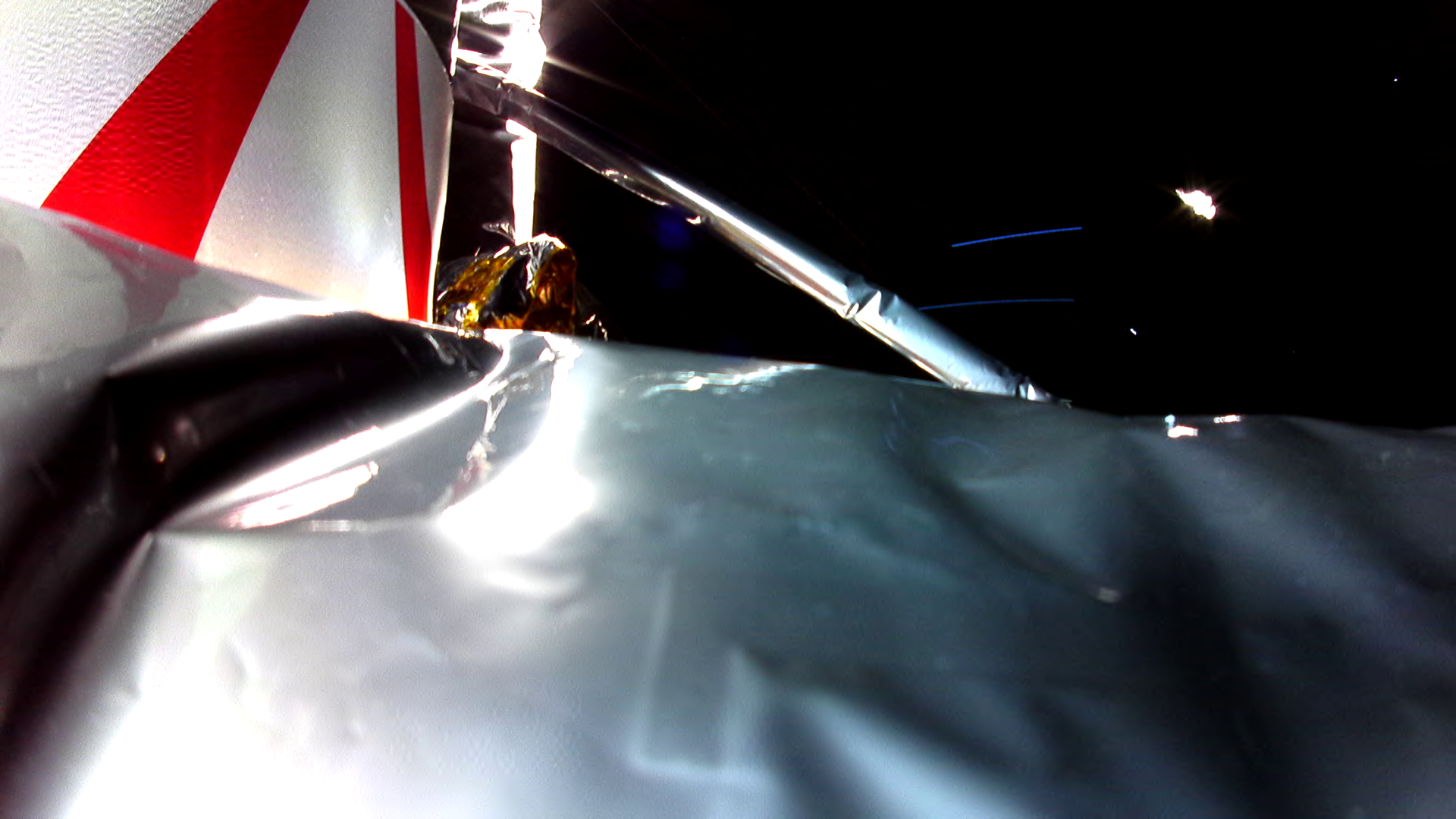
The firm issued a pair of images from the spacecraft, one of which revealed a disturbance of a section of Multi-Layered Insulation (MLI), “the first visual clue that aligns with our telemetry data pointing to a propulsion system anomaly,” Astrobotic revealed. Indeed, a serious propellant leak caused Peregrine’s Attitude Control System (ACS) thrusters “to operate well beyond their expected service life-cycles to keep the lander from an uncontrollable tumble”, creating the likelihood that the spacecraft could continue in a stable, Sun-pointing orientation for no more than 40 hours.
“At this time,” Astrobotic reported on Tuesday, “the goal is to get Peregrine as close to lunar distance as we can before it loses the ability to maintain its Sun-pointing position and subsequently loses power.” Another pointing issue hit the snakebitten mission, again tilting it away from the Sun and reducing its power generation, but flight controllers persevered and succeeded in updating the control algorithm and correcting the issue.
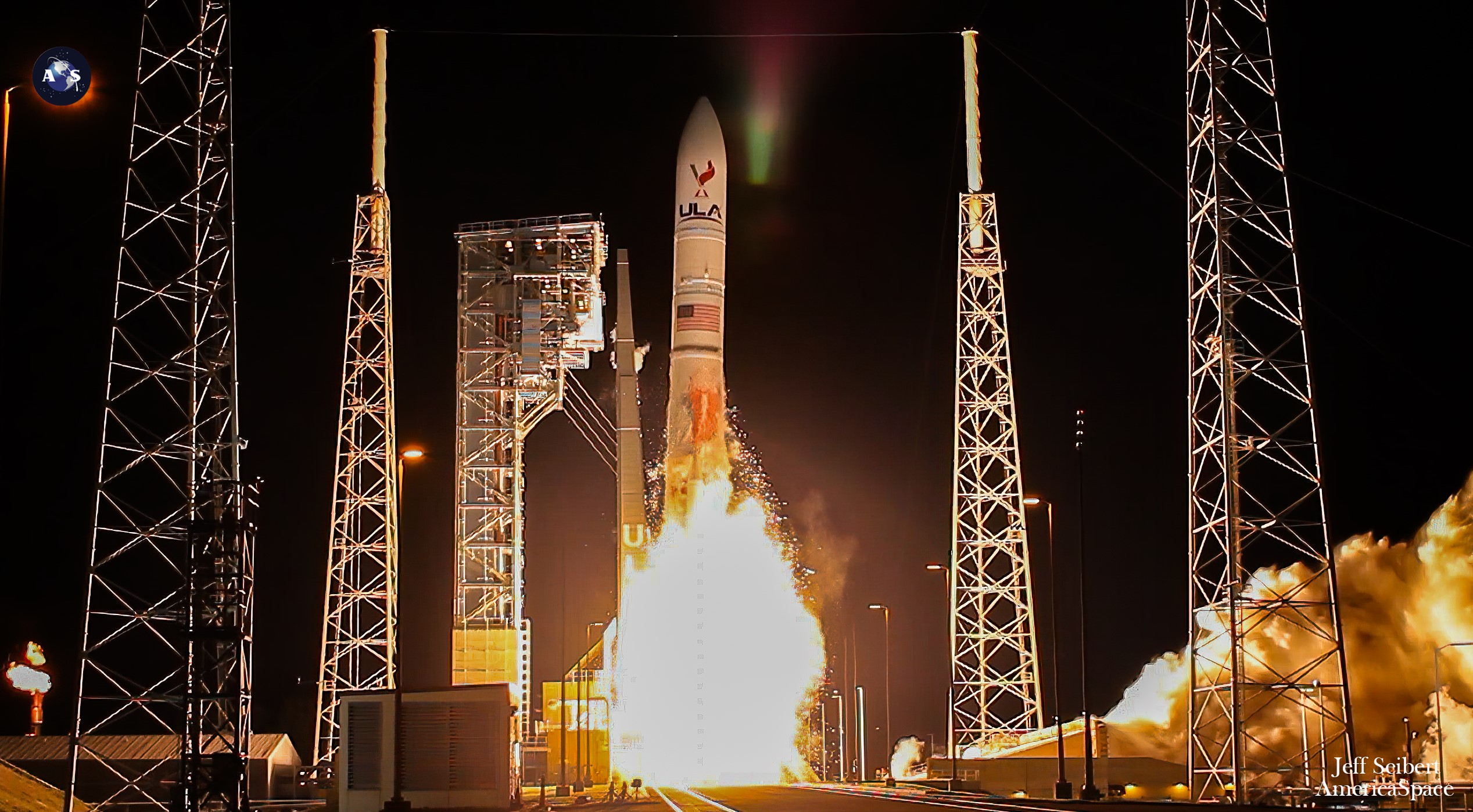
But it was readily apparent that a Moon landing was out of the question. “We do still have enough propellant to continue to operate the vehicle as a spacecraft,” Astrobotic reported later on Tuesday, adding that “ULA’s Vulcan rocket inserted Peregrine into the planned translunar trajectory without issue…there is no indication that the propulsion anomaly occurred as a result of the launch.”
By Wednesday evening, Peregrine had reached a distance of 200,000 miles (320,000 kilometers) from Earth, some 84 percent of the way to lunar distance. “Although we are approaching lunar distance, the Moon won’t be there,” noted Astrobotic.
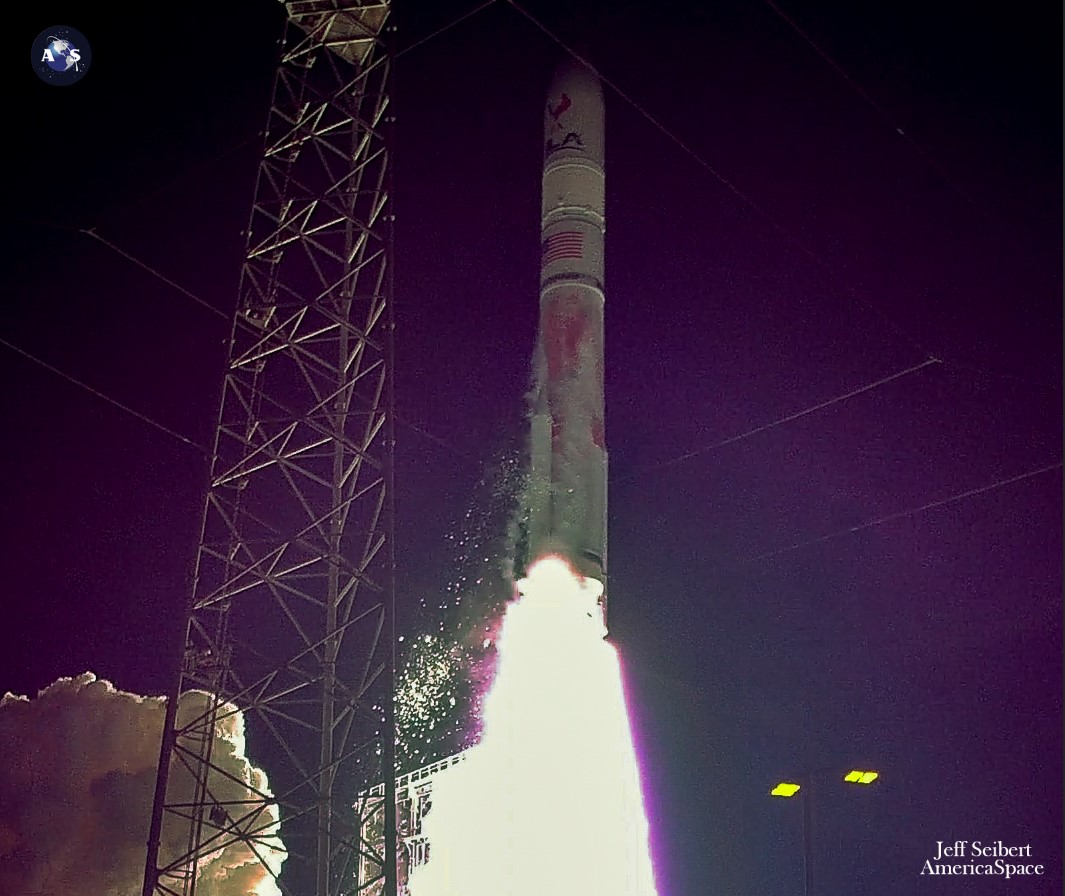
“We remain on our nominal trajectory for the mission, which includes a phasing loop around Earth,” it was continued. This loop goes out to lunar distance, swings back around the Earth and then cruises out to meet the Moon. This trajectory reaches the Moon in about 15 days post-launch.”
Last night, as the leak continued unabated, a revised estimate suggested Peregrine had about 36 hours of propellant remaining in its tanks. This already marks a substantial improvement from earlier, gloomier predictions, and stands testament to the remarkable around-the-clock efforts of Astrobotic’s flight control team to keep their spacecraft on the straight and narrow and ensure its survival as long as possible.
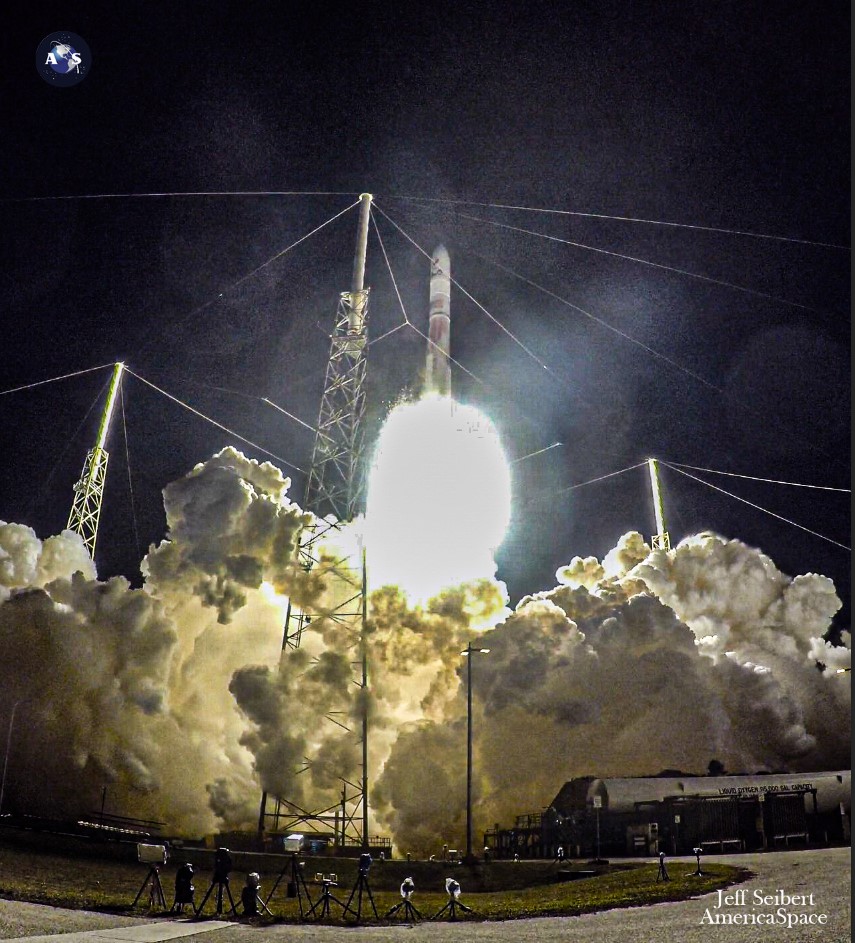
Launch services contracts for Peregrine were signed between Astrobotic and ULA back in July 2017, with expectations that the mission would fly “a ULA launch vehicle”—Vulcan-Centaur was not initially specified—in July 2019 during the 50th anniversary celebrations of the Apollo 11 lunar landing. But as Vulcan-Centaur’s development slipped inexorably to the right, launch found itself retargeted initially for no earlier than 2021 and later beyond.
In August 2019 Astrobotic confirmed that Peregrine Mission (PM)-1 would fly Vulcan-Centaur’s maiden mission. Weighing 2,830 pounds (1,280 kilograms), the four-legged Peregrine spacecraft had been unveiled in 2016 as a scalable, evolvable landing vehicle and named in honor of the peregrine falcon, the most widely distributed bird of prey on Earth, which inhabits every continent save for Antarctica.
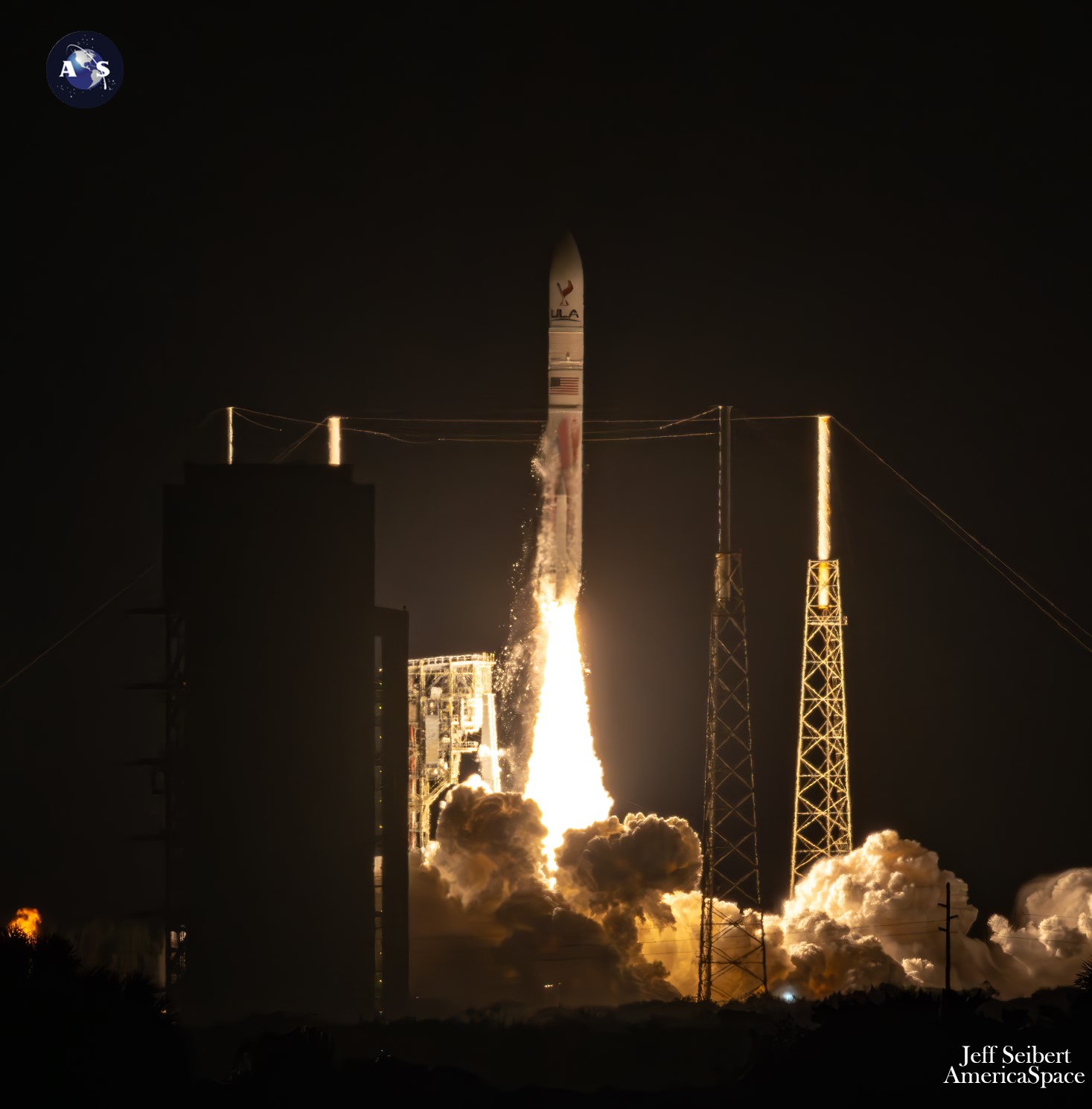
“Our Peregrine lander is aptly named to represent how Astrobotic has nimbly adapted to the many challenges and changing landscapes of the space sector,” said Astrobotic CEO John Thornton. “This design tells our PM-1 story every time it’s sewn onto a jacket or projected onto a screen.”
In November 2018, Astrobotic was one of nine U.S. companies selected to bid on NASA payload delivery services to the Moon under the Commercial Lunar Payload Services (CLPS) program. Six months later, it was awarded a $79.5 million contract to fly as many as 14 scientific and commercial payloads to Lacus Mortis (“Lake of Death”), a hexagonal patch of basaltic lava flow on the Moon’s near side. That site was later shifted to Sinus Viscositatis (“Bay of Stickiness”) just outside of Gruithuisen Domes, a set of large, non-basaltic domes on the northeastern border of Oceanus Procellarum (“Ocean of Storms”).
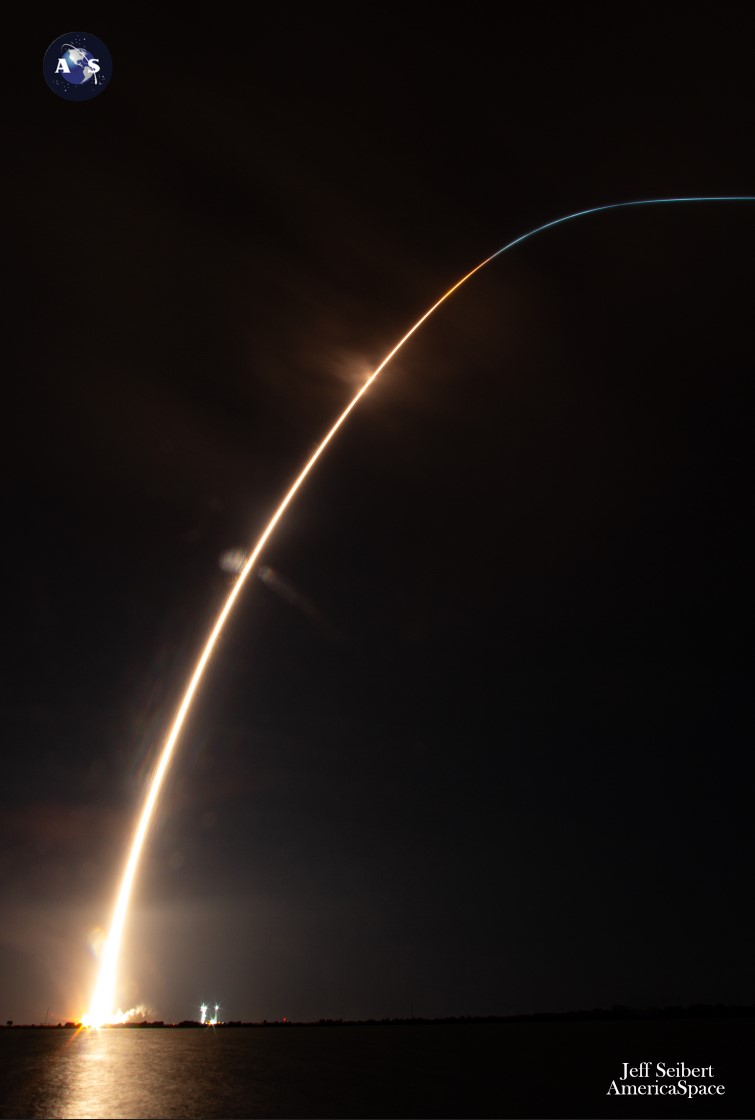
But as Vulcan-Centaur’s Cert-1 mission slipped regularly to the right, Peregrine found itself similarly delayed in tight lockstep. For this mission, the lander was laden with 21 scientific payloads from seven sovereign nations, including six from NASA, and was expected to operate for up to ten days on the Moon’s surface.
The Linear Energy Transfer Spectrometer (LETS), from the Johnson Space Center (JSC) in Houston, Texas, was designed to assess the radiation environment on the lunar surface. The Ames Research Center (ARC) in Mountain View, Calif., supplied the Near Infrared Volatile Spectrometer System (NIRVSS) to examine surface and subsurface hydration and morphology and the Neutron Spectrometer System (NSS) would characterize hydrogen-bearing minerals and regolith composition.
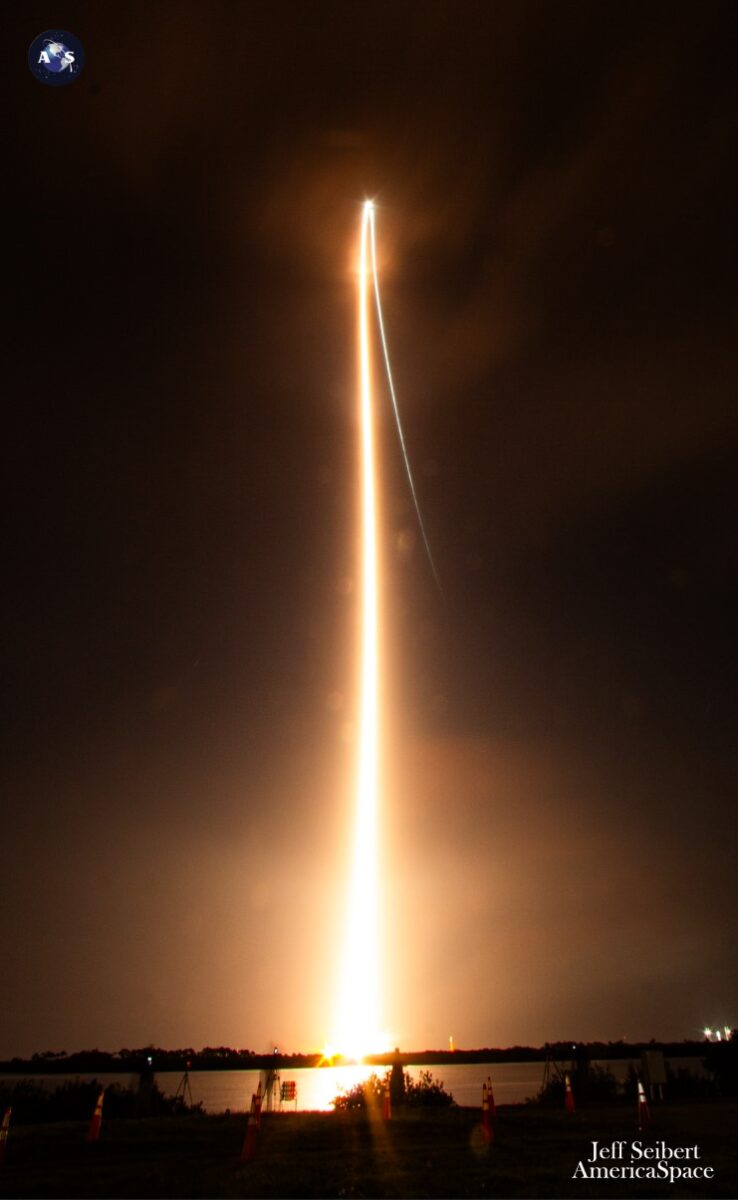
The Goddard Space Flight Center (GSFC) in Greenbelt, Md., provided the Peregrine Ion-Trap Mass Spectrometer (PITMS) to measure the lunar exosphere during descent and landing and the Laser Retroreflector Array (LRA) to facilitate extremely precise laser-ranging applications. And the Langley Research Center (LaRC) in Hampton, Va., supplied a Navigation Doppler Lidar (NDL) to determine Peregrine’s approach and landing profile towards landing on the Moon with great precision.
The other 15 payloads came from the United States, Germany, Mexico, Japan, Hungary, the Seychelles and the United Kingdom. They include the first Latin American scientific instrument ever to head to the Moon’s surface.
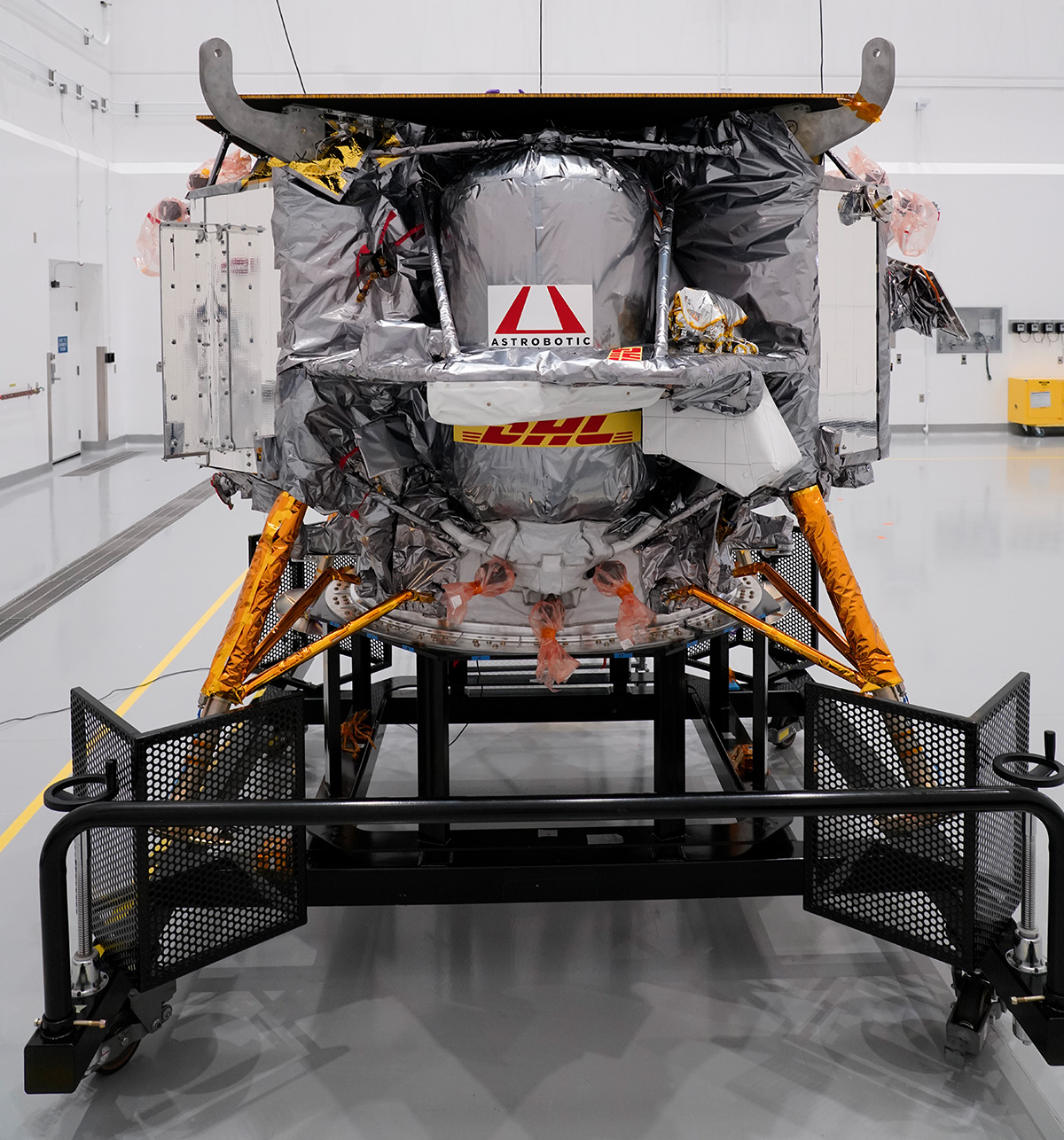
Also aboard are several “time capsules”, including one from Japan with messages from 80,000 children and DHL’s “Moonbox”, containing photographs, novels and students’ work. Other cargoes include a piece of Mount Everest, physical samples of bitcoin, memorials from the Celestis and Elysium “space burial” organizations and a Hungarian Memory of Mankind (MoM) plaque with archival imagery and miniaturized texts.
Notably, Astrobotic provided a standalone Terrain Relative Navigation (TRN) sensor with unparalleled accuracy on the order of 300 feet (100 meters) or less). And Carnegie Mellon University’s shoebox-sized Iris rover was also aboard.
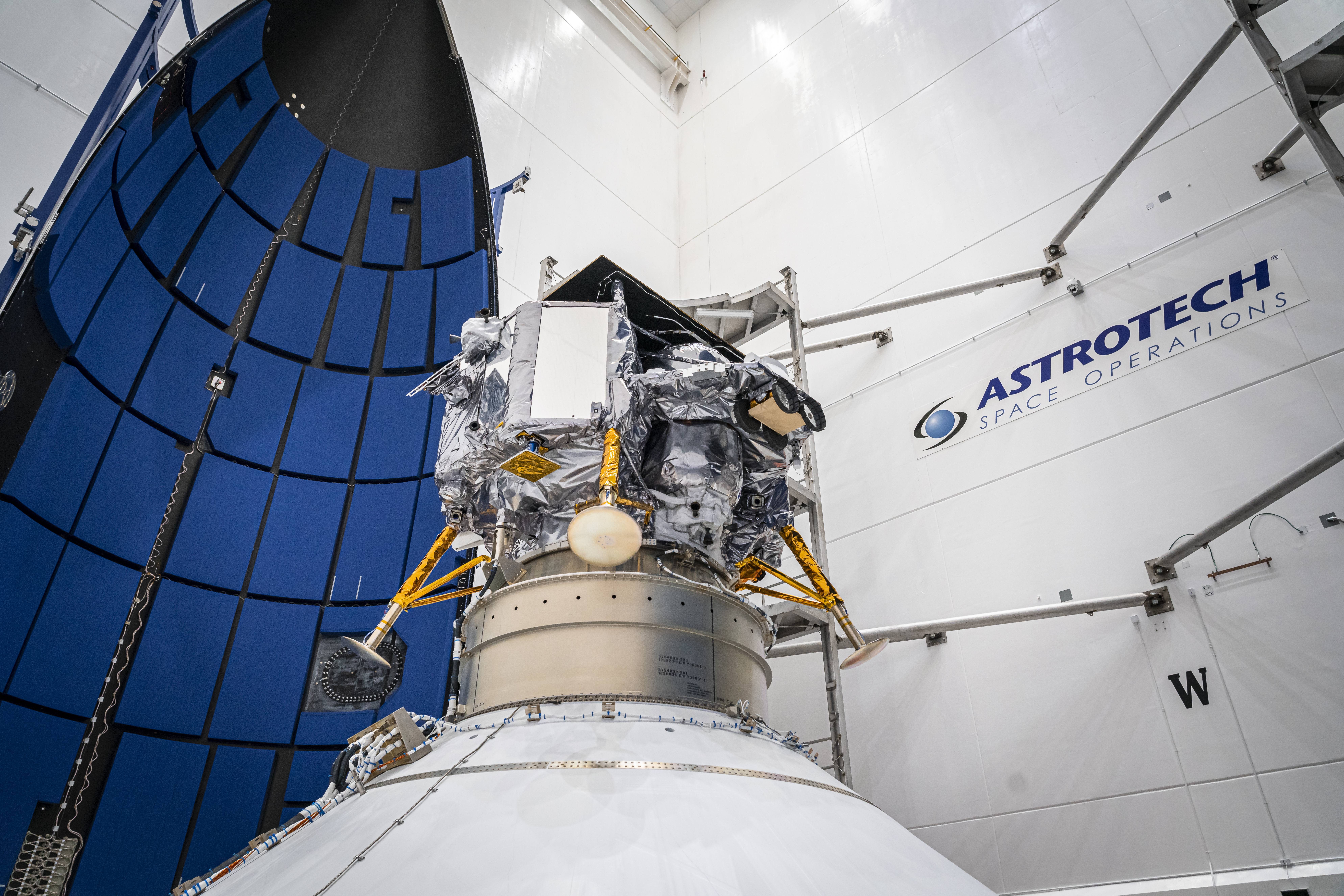
This tiny, 4.4-pound (2-kilogram) craft should have marked the first wheeled U.S. robotic craft ever to land on the Moon. It might also have been the smallest and lightest rover to date, tasked with geological imaging and the gathering of ranging data for relative localization methodologies.





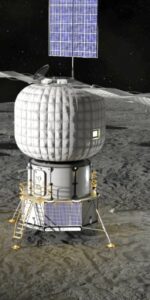
Even a blind squirrel finds a nut now and then. LOL